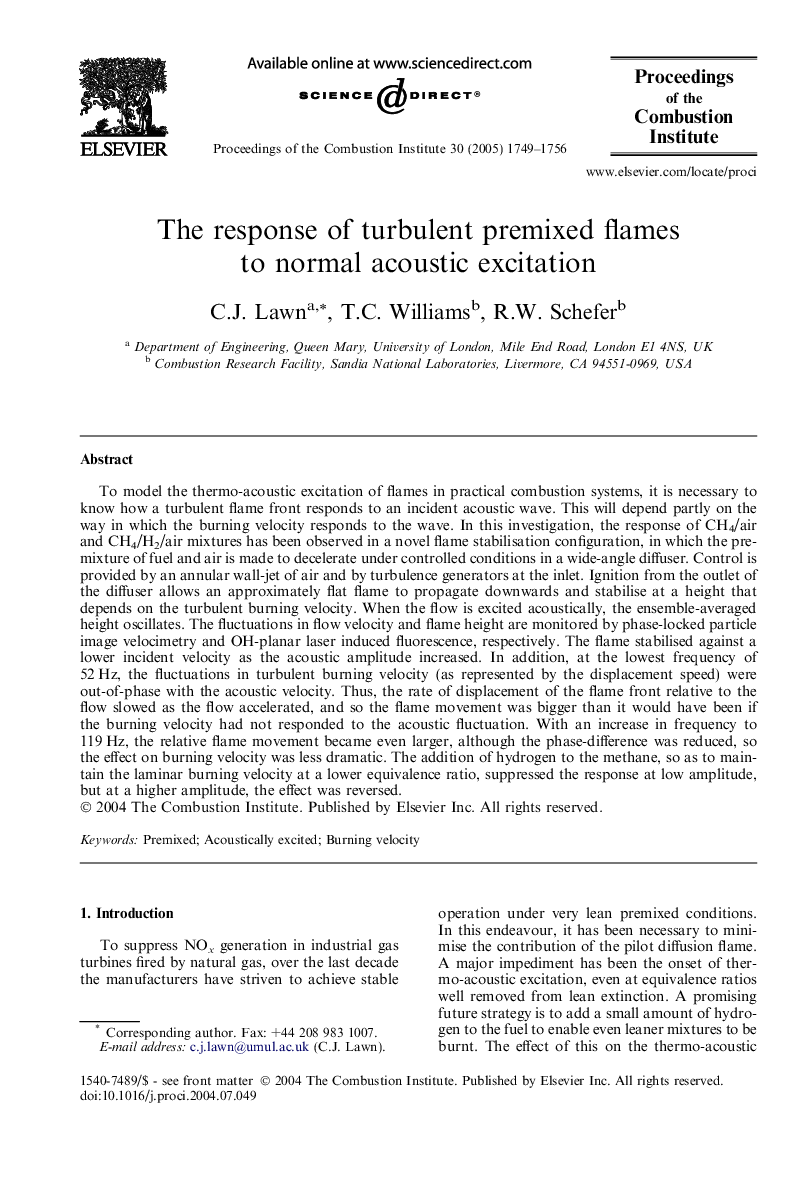| کد مقاله | کد نشریه | سال انتشار | مقاله انگلیسی | نسخه تمام متن |
|---|---|---|---|---|
| 240914 | 1427930 | 2005 | 8 صفحه PDF | دانلود رایگان |

To model the thermo-acoustic excitation of flames in practical combustion systems, it is necessary to know how a turbulent flame front responds to an incident acoustic wave. This will depend partly on the way in which the burning velocity responds to the wave. In this investigation, the response of CH4/air and CH4/H2/air mixtures has been observed in a novel flame stabilisation configuration, in which the premixture of fuel and air is made to decelerate under controlled conditions in a wide-angle diffuser. Control is provided by an annular wall-jet of air and by turbulence generators at the inlet. Ignition from the outlet of the diffuser allows an approximately flat flame to propagate downwards and stabilise at a height that depends on the turbulent burning velocity. When the flow is excited acoustically, the ensemble-averaged height oscillates. The fluctuations in flow velocity and flame height are monitored by phase-locked particle image velocimetry and OH-planar laser induced fluorescence, respectively. The flame stabilised against a lower incident velocity as the acoustic amplitude increased. In addition, at the lowest frequency of 52 Hz, the fluctuations in turbulent burning velocity (as represented by the displacement speed) were out-of-phase with the acoustic velocity. Thus, the rate of displacement of the flame front relative to the flow slowed as the flow accelerated, and so the flame movement was bigger than it would have been if the burning velocity had not responded to the acoustic fluctuation. With an increase in frequency to 119 Hz, the relative flame movement became even larger, although the phase-difference was reduced, so the effect on burning velocity was less dramatic. The addition of hydrogen to the methane, so as to maintain the laminar burning velocity at a lower equivalence ratio, suppressed the response at low amplitude, but at a higher amplitude, the effect was reversed.
Journal: Proceedings of the Combustion Institute - Volume 30, Issue 2, January 2005, Pages 1749–1756